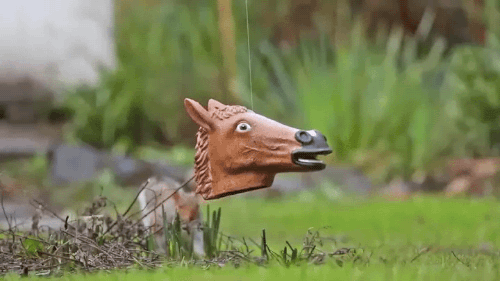Don't wanna be here? Send us removal request.
Text
Blog Post #5 - Impressionism

Olive Trees with Yellow Sky and Sun by Vincent Van Gogh
The Impressionists' style developed during the late 1860s. Some of the characteristics and techniques of impressionism are light and its reflection, quickly painted surfaces, separating colors and letting the eye's perception mix them, and modern life as the subject matter.

Wheatstacks - End of Summer by Claude Monet
Some of the most known artists of this time are Claude Monet, Edgar Degas, and Pierre-August Renoir. Impressionism can be considered the first modern movements in painting. It's influence spread throughout Europe and eventually the United States. Its creators were artists who rejected the official, government exhibitions, and were often shunned by powerful academic art institutions. They moved away from the fine finish and detail to which most artists did at the time, the Impressionists attempted to create paintings of a scene in the moment. The Impressionists loosened their brushwork and lightened their palettes to include pure, intense colors. Because the paints strayed away from the very detailed work of other paintings of the time, impressionist paintings were often criticized from its unfinished appearance. The Impressionist artists were the first group of people to accept painting en plein air, which basically means painting outside. They were able to do this because of something called paint in tubes which for the first time, allowed the artists to carry everything they need to paint outside in a case. Due to paying so much attention to light in their paints, artists found it necessary to paint outdoors to be able to observe the effects of light and colour in nature. Due to painting mainly outdoors, landscapes, a town or a country side became the most influential subject to artists and it's what is most recognized today.

Gelée Blanche - Hoarfrost by Camille Pissarro

Fruits of the Midi by Pierre Renoir

Impression Sunrise by Claude Monet
2 notes
·
View notes
Text
Blog post #4 - Baroque Art

Mona Lisa by Leonardo Da Vinci
Stretching from the late 16th century to the middle of the 18th century, Baroque art spread all over France, Germany, Netherlands, and Spain from it's Italian roots. Many art works from the Baroque era were associated with the religious tensions from the European Christian community that came from the divide of Roman Catholicism and Protestantism. The Catholic Church use art that tried to represent as much as real life as possible, also by making it visually and emotionally appealing, to influence the largest audience possible. Many of the paintings and sculptures were demanded to be made and painted so that people who were illiterate were able to understand what was going on, rather than just the educated people. Because of this, Baroque art tends to focus on Saints, Virgin Mary, and many other biblical stories.

Madonna with the Long Neck by Parmigianino Francesco Maria Mazzola
A characteristic of Baroque art is the illumination of figures that contrasts with dark shadows. This type of light is intended to heighten the dramatic effect. Baroque art also tending to focus on the most dramatic point, especially in paintings of events. For example, Michelangelo shows his David composed and still, but Bernini’s baroque David is caught in the act of hurling the stone. In general, baroque art exudes passion and is elaborate in its representation of the subject. It is often associated with textured, flowing robes.

David by Giovanni Bernini

Sistine Chapel by Michelangelo di Lodovico Buonarotti Simoni
0 notes
Text
Blog post #3 - Gothic Art
Gothic art evolved from Romanesque art and lasted from the mid-12th century to as late as the end of the 16th century. Paintings in the Gothic era followed the same system of style evolution as the sculptures did. They went from stiff and simple forms to more relaxed and natural figures. Many of these paintings displayed figures and scenes of the New Testament. The style of these paintings heavily showed flowing and curving lines, small attention to detail and very refined decoration.

Très riches heures du duc de Berry by The Limburg brothers

Abraham and the Three Angels, from the Psalter of Saint Louis
Architecture was the most important artistic expression during the Gothic Age. Gothic Architects were able to solve some of the greatest problems that were associated with supporting heavy masonry ceiling vaults over wide spans. First off, they developed a ribbed vault, in which arching and intersecting stone ribs support a vaulted ceiling. Because of this the walls could be built thinner and could even be opened up with large windows. Then by employing flying buttresses, they were able to absorb the ceilings thrust from the top down. These elements allowed Gothic architects to build much larger and taller buildings than architects of the Romanesque era. The use of flying buttresses made it possible to build extremely tall buildings with thin walls , combined with the system of column piers, and ribs helped create a senses of soaring verticality.

Notre Dame Cathedral
Since it was largely used to decorate the outside of cathedrals and other religious buildings, sculpture was closely related to Gothic Architecture. The more earlier Gothic Sculptures were stone figures of saints and the Holy Family and they were used to decorate doorways and portals of the cathedrals. The sculptures started off in a more stiff, simple, hieratic form style, later in the 12th and the early 13th centuries sculptures became more relaxed and naturalistic.

The Western (Royal) Portal at Chartres Cathedral
0 notes
Text
Blog post #2 Greek Art
The Greeks are famous for their Doric and Ionic temples. The Doric order is the oldest order. The columns have no base and have a very simple capital, basically, Doric buildings were the least decorated. The Ionic order is more decorative than the Doric order. The columns are taller and thinner, the capital and the base of the columns are decorated. The capital is usually decorated with scrolls or other various patterns and the base is decorated by layered rounded edges. Examples of the buildings that used these types of columns are the Parthenon of Athens. Built in the mid 5th century BCE in order to house the statue of Athena which still stands on the Acropolis. Many temples also carried architectural sculpture whose purpose was to tell a story. Many pediments, sculptures and high reliefs were decorated to retell stories of Greek mythology or certain moments in that cities history. The temples also show that Greek architects were perfectly aware about the problems of providing stable foundations that were able to support larger buildings. Greek architects provided some of the most distinctive buildings in the entire ancient world. The Greek's concern with simplicity, proportion, perspective in their buildings would go on to influence architects in the Roman world and provide the foundation for the classical architectural orders which would then dominate the western world from the Renaissance to the present day.

https://www.khanacademy.org/humanities/ancient-art-civilizations/greek-art/beginners-guide-greece/a/introduction-to-greek-architecture

https://en.wikipedia.org/wiki/Ancient_Greek_architecture
Black-Figure and Red-Figure were 2 of the major techniques used to paint ceramic vessels. Both involved applying what is called a slip (a mixture of clay and water) to a suface of a pot and carefully manipulating the firing process in a kiln to control the amount of oxygen reaching the ceramics. There were 3 stages in the kiln. The first was allowing oxygen in which cause the clay to urn red. The second was reducing the oxygen and increasing the heat which turned the clay black and made the clay become glass like. Then in the third stage oxygen was allowed back in turning the clay red again. The red-figure technique was basically the opposite. Instead they used a liquid slip and painted on the background around the shape. Many Greek sculptures were actually painted and artists created a sophisticated integration of three-dimensional form, colour, and design.

http://quatr.us/greeks/art/pottery/blackfigure.htm

http://www.metmuseum.org/toah/works-of-art/07.286.65
The Geometric Period flourished in Greece between 900 and 700 BCE. They decorated the ceramic vessels with spirals, diamonds and cross-hatching. These designs are called linear motifs. The geometric shapes used to represent human figures are what give the geometric style its name. The figures are shown in either full-frontal or full-profile views and they do this by emphasizing flat patterns and crisp outlines

https://pantherfile.uwm.edu/prec/www/course/mythology/0100/ancient.htm
0 notes
Text
USA Problem #68
coming home from a long day of work to find out that your house has been replaced by a Starbucks
45K notes
·
View notes
Conversation
person: are you okay?
me, digging my own grave: what makes you say that
429K notes
·
View notes
Text
when you are doing a group activity in class and your teacher puts the smart kid in your group

1M notes
·
View notes
Text
spring break 2016 on fucken MARS get ur swim trunks ready
159K notes
·
View notes
Text
You’ve heard of Grand Theft Auto, now get ready for
stealy wheely automobiley
461K notes
·
View notes










